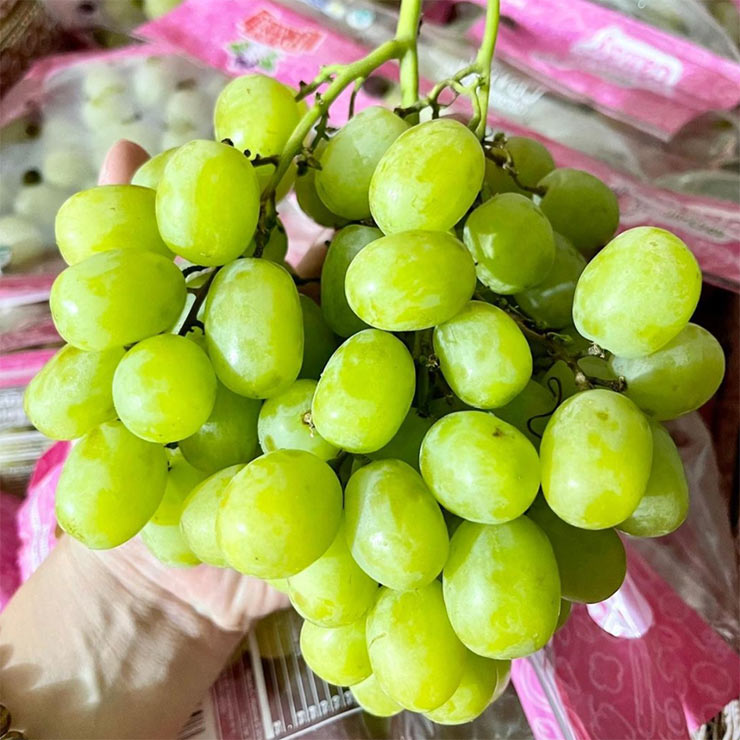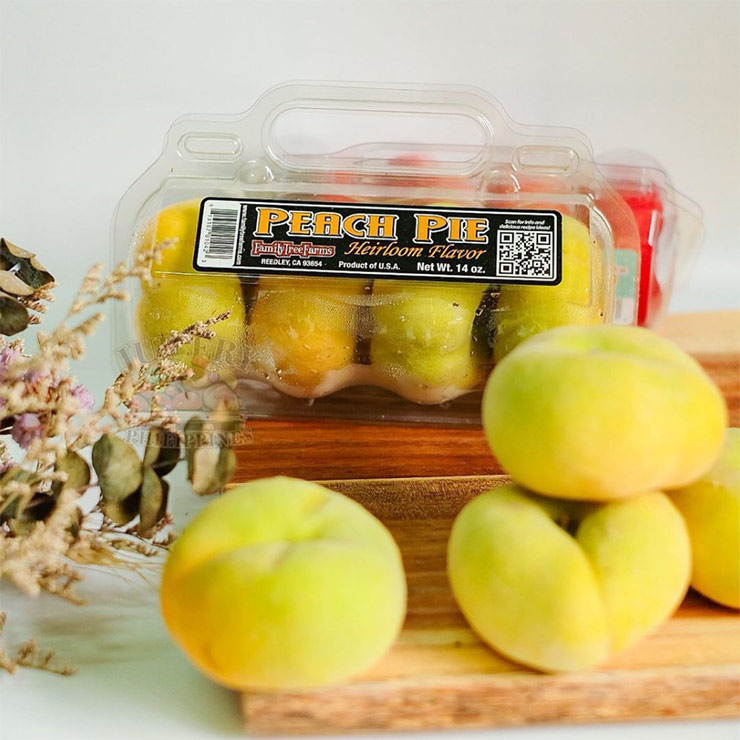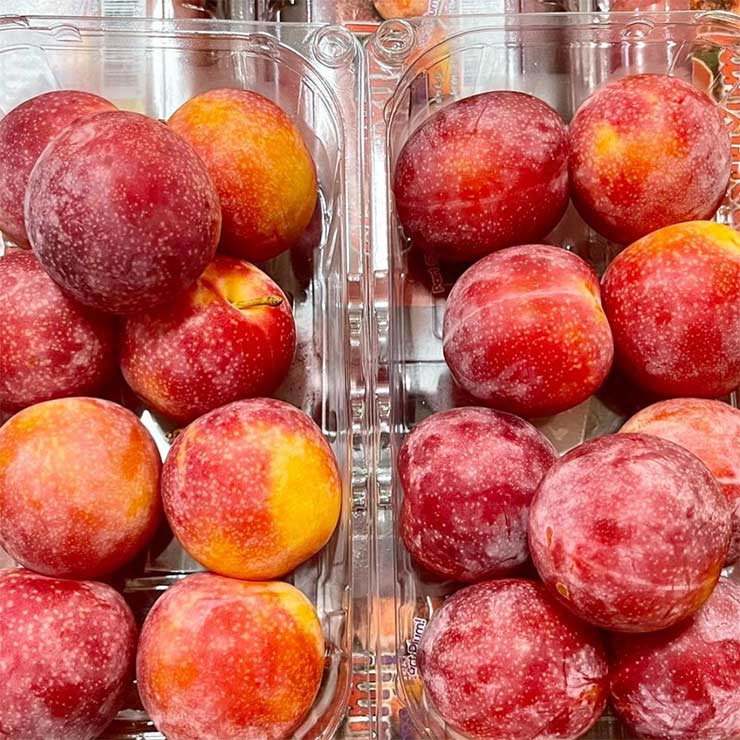Have you tried grapes that taste like cotton candy or gummy berries? Time to get your fruit on.
This year, the fashion world has been ripe with collaborations. From Balenciaga x Gucci’s much-buzzed-about tete-a-tete, to Saint Laurent Rive Droit and the millennial design favorite Memphis Milano, the world of high style is imbibing the message that working together helps the world heal.
For those of us looking to get in on these collaborations (and at the same time nourish ourselves), there is another burgeoning world of exciting collaborations: the fruit world. As I sit and type, I am subsequently munching on cotton candy-flavored grapes. You heard that right: Cotton Candy Grapes.
What, you ask, are Cotton Candy Grapes? The brainchild of horticulturalist David Cain and his team at International Fruit Genetics (IFG), these juicy, sweet delights started as a sweet Concord grape. Noting that it had a cotton candy taste, Cain decided to strengthen the variety by licensing the grape and working to improve the size and texture by crossbreeding with stronger California grapes.
Over 12 years of cross-pollinating took place, in which male grape flower pollens were taken and combined with the female clusters of the grape plant. In 2010, IFG was able to successfully patent the grape and start licensing to growers.
Get your fruit on

I had been hearing of these grapes for a couple of years now, but as they were grown and sold abroad, it seemed impossible that I would ever be able to try. However, thanks to a growing number of Instagram fruit sellers who import designer fruit to the country, it is now possible to get your fruit on.
Natsumi Velasco of @fruitcartph is one such seller. Velasco tells me she started selling in October 2019 and has only ever sold on Instagram and Facebook, so there is no comparison to selling in the traditional method.
“I’d say selling them online is more convenient than having face-to-face customers because you don’t have to respond right away, and we don’t encounter picky customers who touch everything,” she says, although adding that some customers can be impatient when waiting for a reply.
Targeted ads have also helped the business thrive (which is how I probably ended up following about 10 different fruit Instagrams). Mikee Yu, who started @juiceryphilippines in May 2020 notes that the Instagram market is different.
“The Instagram page is easier to discover by the consumers but it’s also hard, you need to have good photos and reviews before you gain returning customers,” she says.
Things that taste like other things

Just like the boom in homegrown food businesses during the pandemic, people have been interested in fruits. Velasco mentions that their sales improved during the start of the pandemic.
While at first, it started because of the ease of convenience in ordering online, people went from ordering basic fruits like apples and oranges to the more “unique” products on offer.
“I feel like since we can’t travel and enjoy other luxuries that we normally do, people are more inclined to indulge in non-traditional food including fruits because they can transport you,” she says. “Some of our best memories are tied with food—eating hot sweet potatoes in the cold streets of Osaka, sampling cherries and peaches in farmer’s markets in the US, munching on the sweetest strawberries in the busiest areas of Myeong-dong. Since we can’t be there now, we bring those experiences to your home.”
Yu believes that it is the novelty that encourages customers to try new things. “People usually find items that they can’t find in the market. They love to discover and try fruits that are unusual and new to them,” she tells me.
I am, admittedly, one of those people. After that first bite of Cotton Candy Grapes, I could not be satiated and needed to try more combinations. I have tried Gummy Berry Grapes (grapes that taste like gummy berries), Plumcots (plum-apricot mixes), Plum Cherry (the union of plums and cherries), and most memorably, something called a “Peach Pie Peach” as in, peaches that taste exactly like they would in a peach pie.
My dad, mystified, asked me “Why do you keep buying things that taste like other things, you should just buy the other things!” before reaching out to try a peach.
Best in show

According to Taste of Home, Cotton Candy Grapes are usually in season from July through early September, although sometimes as in the case here, they can start showing up earlier. (I bought my first batch in mid-June.)
Velasco says that when the hybrid grapes are in season, they tend to be the most ordered, and Yu agrees. On the whole, it depends on the season: other popular items for @fruitcartph tend to be cherries, Japanese sweet potatoes, and Korean strawberries.
“When these were first exported to Manila, people would buy them in bulk,” says Velasco.
During the height of the pandemic, Velasco says it was a lot more challenging to conduct business. “We have a lot of fruits sent via air cargo and canceled flights because a huge problem for us but now that we’re on GCQ, it’s been consistent again,” she says.
According to Yu, the challenge was finding a feasible storage solution. “It’s easy to find a source, but it’s harder to have a good storage cause most of the products are perishable,” she says.
In Japan, it is culturally accepted to give fruits as gifts: for large family gatherings, for a promotion, and the signing of a major contract. We don’t usually do that here, but thanks to Instagram, we can now partake in this bounteous feast and enjoy the burst of sweet joy when we bite into a Cotton Candy Grape.
To buy, visit @fruitcartph and @juiceryphilippines. The process is as easy as asking your selected seller if the fruit you want is available, after which they will tell you, and you can pay by bank deposit and for shipping. If you prefer to pay by credit card, crate2plate entertains card orders.





